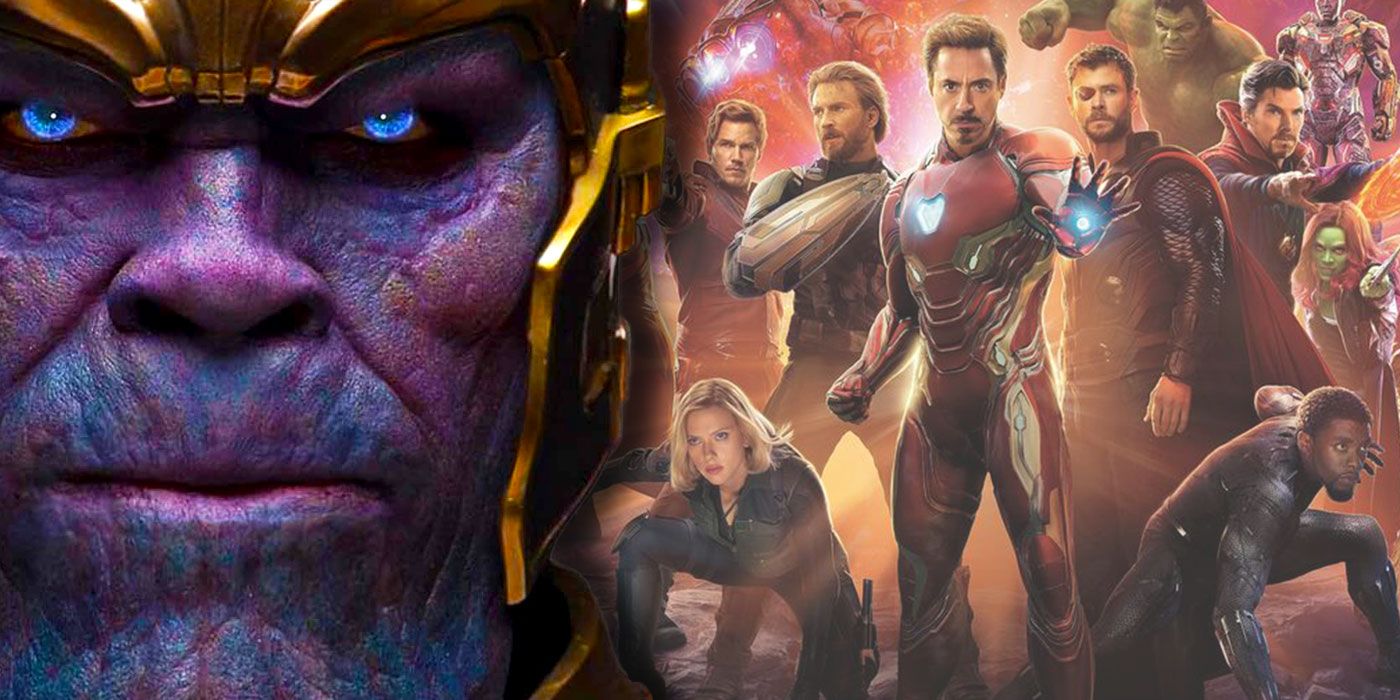The recently released Marvel's Avengers: Infinity War -- The Art of the Movie gives fans of the biggest Marvel movie to date plenty of information to not only expand their understanding of the blockbuster but to help satisfy their appetites while awaiting the still-untitled sequel due out next year. While a lot of the information in the book is naturally about the visual elements of Infinity War, there are also some fascinating insights into the motivations of particular characters too, including the Mad Titan himself, Thanos.
The difficulty of giving a character unlimited omnipotence is acknowledging that there's nothing they cannot do, something that naturally causes problems when it comes to continuing to create drama and tension in a narrative. Even the original Infinity Gauntlet saga suffered from this problem, but much like those comic books upon which it’s based, Avengers: Infinity War looked to the strengths and -- perhaps more importantly -- the weaknesses of its central antagonist in order to dictate the limitations which the burden of the Infinity Stones places on the bearer.
RELATED: Iron Man's Infinity War Armor Was Almost... A Transformer?
One of the biggest questions you could ask about the plot of the movie is: Why didn’t Thanos just kill all of the Avengers as soon as he had the means? Certainly, he disposed of Loki quickly enough, why not do that for anyone that opposes him. The answer is simply that it wasn’t a priority for him.
In The Art of the Movie, Ryan Meinerding, Marvel Studios head of visual development, states, "The plan of getting all the Infinity Stones is putting him in a position of being so powerful that he is sort of calmer, more single-minded, and more reasonable. He is not necessarily worried about killing the heroes. As long as he ends up with the stones, he can accomplish what he wants. That was sort of the place where we were starting. We were trying to find looks that were more casual, because he wouldn't really need his armor after he had gathered more than one Infinity Stone."
RELATED: Red Skull's Early Infinity War Designs Were the Stuff of Nightmares
An understanding of the motivations and the internal logic of Thanos dictates not just his actions, but his visual style. His calmer nature as he progressed through Infinity War, as well as seeing him continue to fight the Avengers rather than just snuff them out with a snap of his fingers makes more sense when you understand that it was almost seen as something beneath him, or at least not something that was high on his list. It makes sense, too. His singular focus and ultimate goal -- to cut the population of the universe in half -- didn’t necessarily need him to kill everyone he came across. As we find out throughout the movie, he sees himself as a good guy, the hero the universe needs, an image which would potentially be tarnished if he slaughtered Avengers discriminatorily.
It’s also especially illuminating to read about Thanos’ style as the movie progresses. Comic fans are used to seeing the Mad Titan’s standard gold and blue armor, and that’s still present to a certain degree in Avengers: Infinity War. But as Ryan Meinerding tells us, the more Infinity Stones Thanos gathers, the less use armor would be to him. It makes perfect sense, and is a subtle way of depicting the changing attitude of the Mad Titan as his power increases.
RELATED: Captain America's Infinity War Shield Is Actually a Nod to the Original
The still-untitled sequel to Infinity War arrives May 3, 2019. Directed by Joe and Anthony Russo, Marvel’s Avengers 4 stars Robert Downey Jr., Josh Brolin, Mark Ruffalo, Tom Hiddleston, Chris Evans, Chris Hemsworth, Jeremy Renner, Chris Pratt, Elizabeth Olsen, Sebastian Stan, Benedict Cumberbatch, Paul Bettany, Samuel L. Jackson, Cobie Smulders, Benedict Wong, Zoe Saldana, Karen Gillan, Vin Diesel, Dave Bautista, Pom Klementieff, Scarlett Johansson, Tom Holland and Anthony Mackie.

